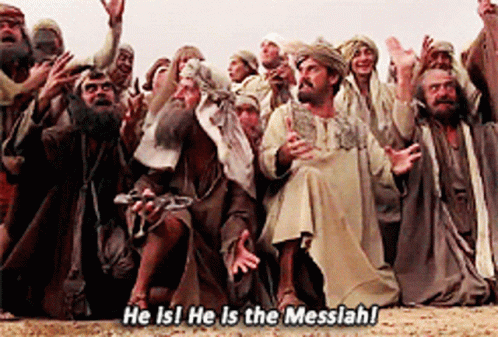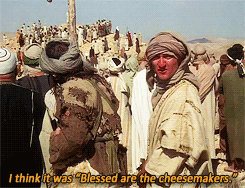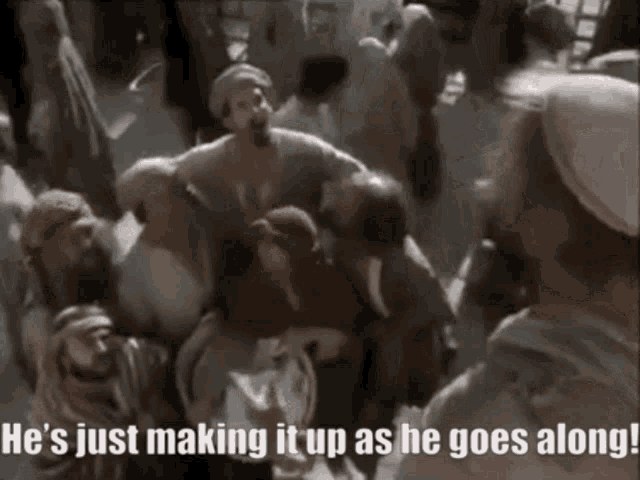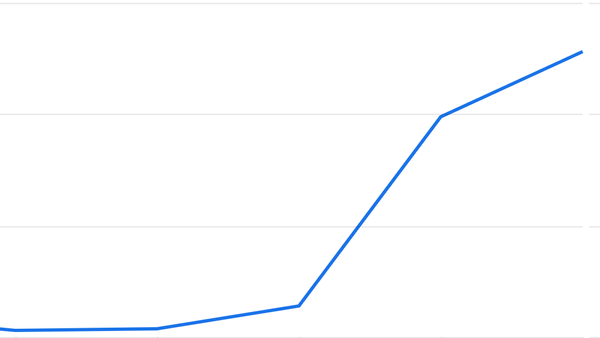I was wrong about marketing.
How new clients turned my business upside down.

Hello, friends.
I’ve been silently marinating a variety of revelations about marketing in my head lately. Apologies for keeping you out of the loop, but I didn’t want to serve you some bland pickles. The real rich flavor comes only to those who wait.
In other words, my agency signed on 3 new clients recently, and they’ve demolished most of my assumptions about marketing, running an agency, and the base value of my and my team’s work. And I couldn’t be happier.
Because I’ve found out that most aspects of working as a B2B marketer that drove me and so many others to despair aren’t set in stone. We can do better, more fulfilling work. We can make more of an impact. We can get approved for higher budgets. And all of that potential isn’t that hard to reach. In fact, it might already be hiding under your nose.
Let me explain.
My Brain’s Been Exploding This October
I’ve spent the past month feeling mostly like this:

Reader, I’ve been so wrong about marketing. I used to stubbornly think that good marketers were those that could do the most work with least guidance. That being great at our jobs meant becoming a lone genius, knowing how to take even the stinkiest turd and turn it into a diamond. That getting valued for our work required talking and talking, dazzling others with our indisputable brilliance.
Bullshit.
We’ve fallen into a trap. Good marketers aren’t those with the loudest megaphones. Those people are simply the most annoying. (And no, that’s not the same thing!)
Becoming a better marketer, just like becoming a better salesperson, often means learning to listen and ask questions.
But it’s so freaking easy to miss that. We get hung up in our popularity contests, chasing follower counts, shiny client logos, promotions, and dazzling case studies. We want to shout at people about all of the wisdom we’ve acquired. We want to preach, converting others to our faith of SEO, paid ads, community growth, PLG, or spelling out discounts with airplane trails.

Except it doesn’t really work like that. Even if we are telling others about the best possible marketing approach (although I doubt one even exists), they might not want to listen.
We can have the best ideas in the world, but if nobody else understand them, those ideas might as well not exist. And the only way to make others actually understand, is to listen and discover what they already believe.
Otherwise, you risk dealing with a pretty confused audience.

Let’s Get Back to the Basics: Why Marketing?
What’s the point of marketing?
And here I am talking about both:
- Internal marketing, where you’re dealing with people within your organization or a client’s
- External marketing, where you’re talking to an audience outside your company, be they prospective customers, investors, partners, etc.
When you’re attempting to reach these internal or external audiences, what exactly are you trying to do?
Most of you will probably say that you’re trying to get those audiences to find out about you. You might want them to learn who you are, what you do, and what your offerings can help with. When you’re looking at the demand and conversion sides of marketing, you’re also trying to turn that attention into some kind of action.
Marketing, in all of its beautiful complexity, boils down to two simple goals:
- Get attention
- Influence behavior.
That’s it. Doesn’t matter if you’re marketing shoes, B2B SaaS, rocket fuel, or a particular theme for the school dance. Every action you take that falls within the scope of “marketing” aims to either get people to think or do something that benefits you.
But here’s the kicker: to get people to think or do something, you need to understand what they already think or do. And no amount of shouting your lungs out will get you that kind of empathy for other people.

Why You Have to Listen More
Sometimes, no matter how smart you might think you are, you need to shut up.
Knowing something is only half of the process. To help others benefit from your knowledge, you need to learn how to teach them. You should be thinking about questions like these:
- What do they already know?
- Where are they stuck?
- How can you effectively communicate the way you think?
- How is it different from what they know?
- What makes trying to learn your approach better than sticking with their current methods?
- Can you design a process that takes others on a journey to discover the topic alongside you?
- How can you make learning actually fun and fulfilling for your audience?
To be a good marketer, you need to be a good teacher.
And good teachers aren’t those who lecture nonstop without ever considering their classroom. Good teachers involve students in learning as an active, collaborative process. Changing what you know or how you act is difficult. It requires effort, support, and depth.
Learn to Think Like a Teacher
If you want your audience to remember you or take action, learn how to teach them. And teaching others often starts with listening to them.
That applies even when you’re being paid large sums of money to provide your advice and input. As I’ve had to learn the hard way in the past month, my clients can neither understand nor implement my advice when I don’t bother to figure out how to explain it. Sure, they’ve hired me and my team for our expertise. But our expertise is useless when those clients are feeling lost, abandoned, or left adrift.
So we’ve been changing our processes and client communication from the ground up.
Instead of attempting to submit perfect, expansive, and polished deliverables, we’ve shifted our focus to teaching clients how to think about marketing like we do. After all, we don’t have to fight so hard for buy-in and contract renewals if our clients already agree with us on what makes our work valuable!
And beyond that, our old deliverables weren’t as effective as they could be. Sure, we’d spend 50+ hours researching a client’s market, products, and audience before sending them a thorough 10,000-word report on everything we discovered. But, as one client said to me a few weeks back, “your deliverables just feel like you’ve handed us a reading assignment.”
Ouch.
Switching Your Mindset May Help More Than You Expect
The funny part is, once we switched to thinking of ourselves less as “experts” and more as “teachers”, our clients became more impressed by us.
We’ve been getting incredible feedback from every company that we’re working with. Clients have told us that we’ve opened their eyes to things they’ve never considered, that our explanations helped them understand topics they’ve struggled with for years, and, best of all, a few days ago a new client told us:
“I finally don’t feel so alone in my job, because your team is asking the same questions that I’ve had to ask for the past year.”
I was scared that if we admitted how much we don’t know, our clients would leave us for a competitor who promised all the answers.
Instead, we got ourselves new collaborative partners, eager to learn and teach us something of their own.
Thank you for reading Attention Deficit Marketing Disorder. This post is public so feel free to share it.
Top 3 Reading Recommendations
- “I Survived a Mass Shooting. It Changed the Way I Sell.” by Brian Hicks. Brian is the VP of Sales with one of our new clients, Belkins. I interviewed him earlier this week, and was shocked by how similar Brian is to me in using past trauma to fuel not only his work, but also his public narratives and content.
- “NEW SURVEY: B2B BUYERS RELY ON SEARCH BUT DON’T TRUST SAAS COMPANIES” by Tracey Wallace. If you’re in B2B marketing, you have to read this piece. We need to do better in actually earning and deserving the trust of our buyers.
- “Avoiding the Used Car Salesman Trap” by April Dunford. The brilliant April has recently started a Substack, and everything she publishes is incredible. I want to memorize every word she’s ever written, I love it that much.
Musical Minute
“Wild Side” by ALI.
Yes, I watch anime. And yes, I have been really into Beastars, a violent romance saga that’s kind of like Zootopia but way more obviously a furry show. But even if you don’t care for those things, this song is awesome. Give it a try.





